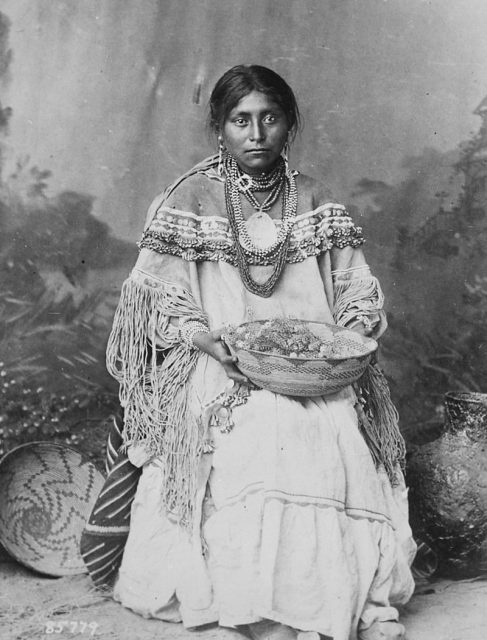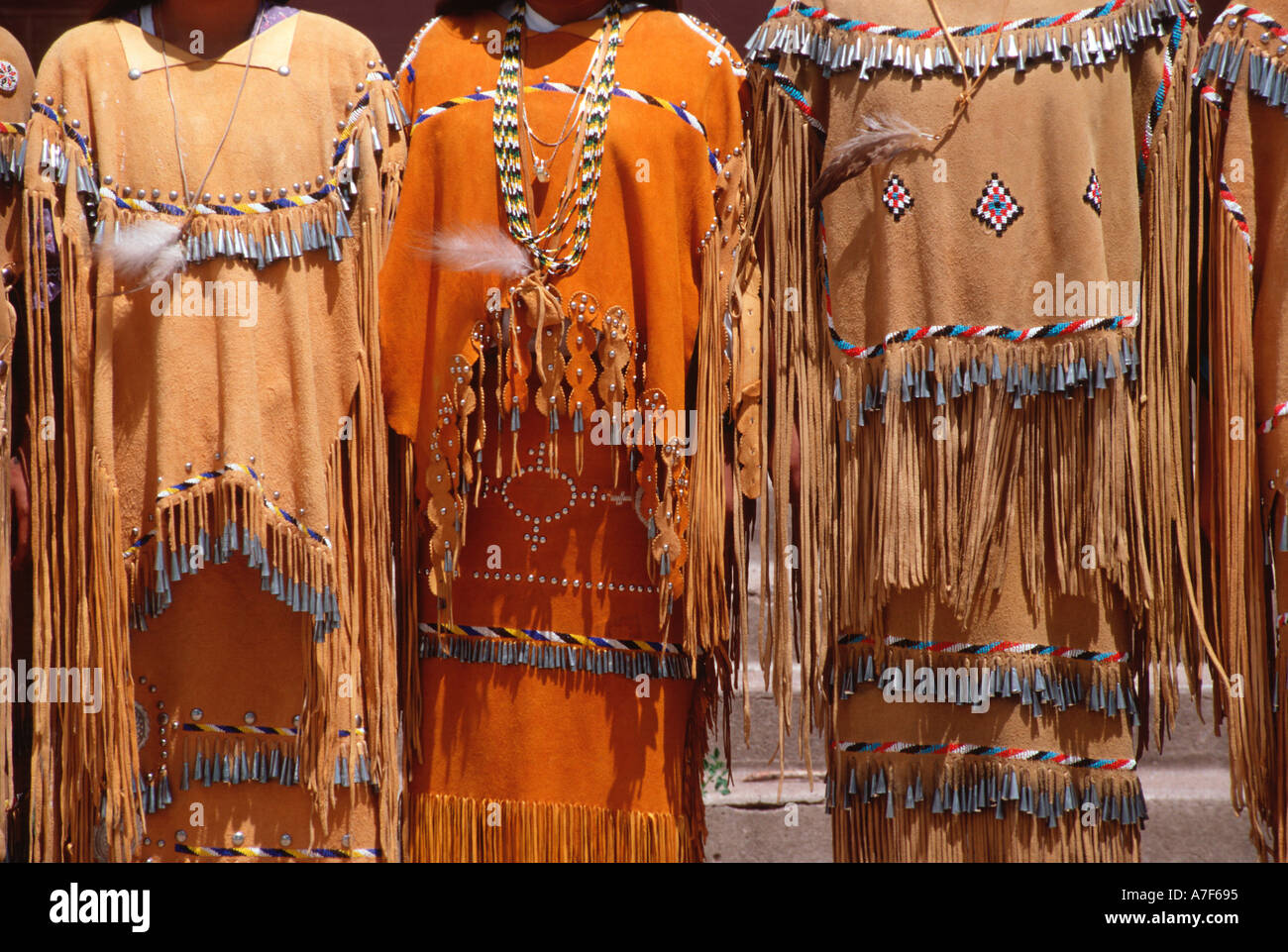
Threads of Identity: The Enduring Legacy of Apache Traditional Dress
The rugged landscapes of the American Southwest and Plains, from the sun-drenched deserts to the pine-clad mountains, have long been home to the various bands of the Apache people. More than just a testament to their adaptability and resilience, the traditional dress styles of the Apache nations – encompassing the Chiricahua, Mescalero, Jicarilla, Lipan, Western Apache (San Carlos, White Mountain, Cibecue, Tonto), and others – serve as a vibrant tapestry woven from history, spirituality, and an unbreakable connection to the land. Far from being static relics of the past, these garments represent a living art form, evolving through time while steadfastly preserving the core elements of Apache identity.
At its heart, Apache traditional dress is a narrative. Each stitch, bead, fringe, and painted design tells a story – of tribal affiliation, personal achievement, spiritual belief, and the daily rhythms of life in a challenging yet bountiful environment. To understand Apache attire is to glimpse the soul of a people defined by their ingenuity, reverence for nature, and profound sense of self.
A Canvas from the Land: Materials and Craftsmanship

Before the arrival of European traders, Apache clothing was crafted almost exclusively from materials provided by their immediate environment. The primary material was animal hide, predominantly deer, elk, and buffalo. The process of transforming raw hides into supple, wearable leather was an arduous, highly skilled endeavor, traditionally performed by women. This involved scraping, de-hairing, brain-tanning (using the animal’s own brains to soften the hide), and often smoking the leather over a fire to add durability, water resistance, and a distinctive reddish-brown hue. The resulting buckskin was incredibly soft, breathable, and remarkably durable, perfectly suited for the nomadic lifestyle of hunting and gathering.
Natural dyes, derived from plants, minerals, and earth pigments, were used to add color to the hides and later, to porcupine quills and sinew. Red, yellow, black, and white were common, each carrying symbolic significance. Sinew, painstakingly extracted from animal tendons, served as the primary thread, strong and durable, capable of holding together the most intricate garments.
With the advent of trade routes, new materials began to integrate into Apache dress. Glass beads, initially large and relatively crude, later becoming smaller and more uniform, arrived from Europe. These vibrant, durable beads quickly replaced or augmented traditional adornments like porcupine quills, shells, bone, and seeds, offering new possibilities for intricate designs and brilliant color palettes. Wool trade cloth, particularly broadcloth, also became highly prized, offering an alternative to buckskin for certain garments and providing a rich, solid background for beadwork.
Men’s Attire: Practicality and Prestige
Apache men’s traditional attire was designed for mobility, protection, and the rigors of hunting and warfare, yet it was also imbued with personal and spiritual significance. The basic components included:
- Breechclouts: A strip of buckskin or trade cloth passed between the legs and secured over a belt, with decorated flaps hanging front and back. These were often adorned with beadwork, fringe, or painted designs.
- Leggings: Separate tubular pieces of buckskin, worn from the ankle to the upper thigh, tied to the belt. They provided protection against thorns, brush, and insect bites. Leggings were frequently fringed, beaded along the outer seam, or painted with geometric patterns.
- Shirts: Simple, loose-fitting shirts made from buckskin, often fringed along the sleeves and hem. Later, shirts made from trade cloth became popular, serving as a canvas for elaborate beadwork or ribbon appliqué.
- Moccasins: Soft-soled, high-top moccasins were characteristic of Apache footwear. Made from a single piece of buckskin that wrapped around the foot and lower leg, they provided excellent protection against rough terrain. The soles were often rawhide for durability. Designs varied by band, but often featured intricate beadwork on the vamp and ankle flaps.

Beyond these staples, men often wore armbands and necklaces made of shells, bone, and later, silver and turquoise. Headwear was also significant. While the elaborate feathered war bonnets commonly associated with Plains tribes were not typical for most Apache groups, simpler headbands adorned with feathers, beads, or painted designs were common. Hair was often worn long, sometimes braided or tied, and adorned with ornaments. War shirts, often painted with spiritual symbols or depictions of valor, were reserved for special occasions or ceremonial wear.
Women’s Attire: Grace, Ceremony, and Enduring Beauty
Apache women’s traditional dress was equally practical and beautiful, often more elaborate for ceremonial occasions, and reflected their vital role in family and community life.
- Dresses: The iconic Apache woman’s dress was typically a two-piece buckskin ensemble. The top consisted of a poncho-style tunic, often fringed and sometimes adorned with beadwork or painted designs. The skirt was a separate wrap-around piece, also heavily fringed, especially along the bottom hem. The fringes were not merely decorative; they were functional, shedding water and offering camouflage in tall grasses. Over time, the two-piece dress evolved into a single-piece garment, especially when made from trade cloth. These cloth dresses became canvases for exquisite beadwork, particularly on the yoke and cuffs, often incorporating floral or geometric designs.
- Capes/Shawls: Women often wore buckskin capes or later, wool shawls, providing warmth and modesty. These, too, could be highly decorated.
- Moccasins: Apache women’s moccasins were distinct, often featuring a high, boot-like shaft that wrapped around the lower leg, providing extensive protection. Like men’s moccasins, they were typically made from brain-tanned buckskin with a rawhide sole, and often extensively beaded, especially for ceremonial wear. A distinguishing feature for some Apache groups, particularly the Mescalero and Chiricahua, was the "turn-up" toe, a practical design element that helped prevent stubbing toes on rocky terrain.
- Belts: Wide, often beaded or concho (silver disc) belts were worn to cinch the dresses and were significant items of adornment.
- Jewelry: Necklaces of shell, bone, seeds, and later, trade beads and silver, were common. Earrings and bracelets also contributed to their adornment.
Perhaps the most culturally significant female attire is that worn during the Na’ii’ees, or Sunrise Dance, the elaborate four-day puberty ceremony for young Apache girls. The ceremonial dress for this occasion is a magnificent buckskin outfit, often white or cream-colored, heavily fringed, and sometimes adorned with painted designs or minimal beadwork. This dress symbolizes purity, the girl’s transformation, and her connection to Changing Woman (Isáánatikl’ásh), a central figure in Apache cosmology. The dress is not merely clothing; it is a sacred conduit, an integral part of the ceremony itself.
Adornments: A Language of Beads and Beyond
The true artistry of Apache traditional dress often lies in its adornments. Beadwork, in particular, became a prominent form of artistic expression. Early beadwork was primarily geometric, using simple patterns and colors derived from natural sources. With the introduction of tiny glass seed beads, the complexity and vibrance of designs exploded. Apache beadwork, while often sharing characteristics with neighboring Plains tribes, maintained its distinct aesthetic. Designs frequently reflected elements of the natural world – mountains, water, lightning, and stars – or abstract representations of spiritual concepts. Colors were chosen not just for beauty but for their symbolic meaning: blue for sky and water, red for life and the earth, white for purity.
Fringe, often overlooked as mere decoration, was an essential element. Cut into thin strips from the edges of buckskin garments, it provided movement, shed water, and added a layer of protection. When worn, the fringes danced with every movement, creating a dynamic visual effect.
Other adornments included porcupine quills, flattened and dyed, then stitched onto leather in intricate patterns; shells, particularly abalone and dentalium, prized for their iridescence and rarity; and later, metal elements like brass tacks, bells, and silver conchos, which added shine and sound to the garments. Each element was carefully chosen and placed, contributing to the overall aesthetic and narrative of the piece.
Dress as a Spiritual and Cultural Narrative
Beyond their practical and aesthetic functions, Apache traditional dress styles are deeply intertwined with the spiritual and cultural fabric of the people. Clothing was often seen as a protective layer, imbued with power from the animals whose hides were used, or from the sacred symbols incorporated into its design. A war shirt might carry the power of a bear, while a woman’s ceremonial dress embodied the life-giving essence of Changing Woman.
The act of creating traditional dress was itself a spiritual practice, a painstaking process of transforming raw materials into objects of beauty and power. It involved patience, skill, and respect for the materials and the spirits associated with them. This connection to creation fostered a deep sense of ownership and pride in one’s attire.
Moreover, dress served as a powerful marker of identity and affiliation. Subtle differences in moccasin style, beadwork patterns, or the cut of a garment could indicate a person’s specific Apache band or even their family lineage. In a world before written records, clothing was a visual language, conveying information about the wearer’s status, accomplishments, and community ties.
Resilience and Revival in the Modern Era
The late 19th and early 20th centuries brought immense pressure on Apache communities to abandon their traditional ways, including their dress. Government policies of forced assimilation, the reservation system, and the suppression of cultural practices led to a decline in the daily wearing of traditional attire. Western clothing became more common, sometimes out of necessity, sometimes under duress.
However, the spirit of Apache traditional dress endured. In the privacy of homes and during clandestine ceremonies, the knowledge of tanning, beadwork, and garment construction was passed down through generations. The objects themselves became cherished heirlooms, symbols of a heritage that could not be extinguished.
Today, there is a powerful resurgence of interest and pride in Apache traditional dress. Powwows, tribal ceremonies, and cultural events provide vibrant platforms for individuals to showcase their traditional regalia. Contemporary Apache artists and designers are drawing inspiration from ancestral styles, adapting them with modern materials and techniques while maintaining cultural authenticity and respect. They are creating stunning works that are both deeply rooted in tradition and relevant to the present day. This revival is not merely about fashion; it is about cultural revitalization, reclaiming identity, and educating younger generations about their rich heritage.
Apache traditional dress styles are a testament to the enduring spirit of a people. From the practical buckskin garments of their nomadic past to the elaborate ceremonial regalia of today, each piece embodies a profound connection to the land, a rich spiritual worldview, and an unwavering sense of identity. These are not just clothes; they are threads of history, woven with skill, imbued with meaning, and worn with pride, ensuring that the legacy of the Apache people continues to shine brightly for generations to come.


